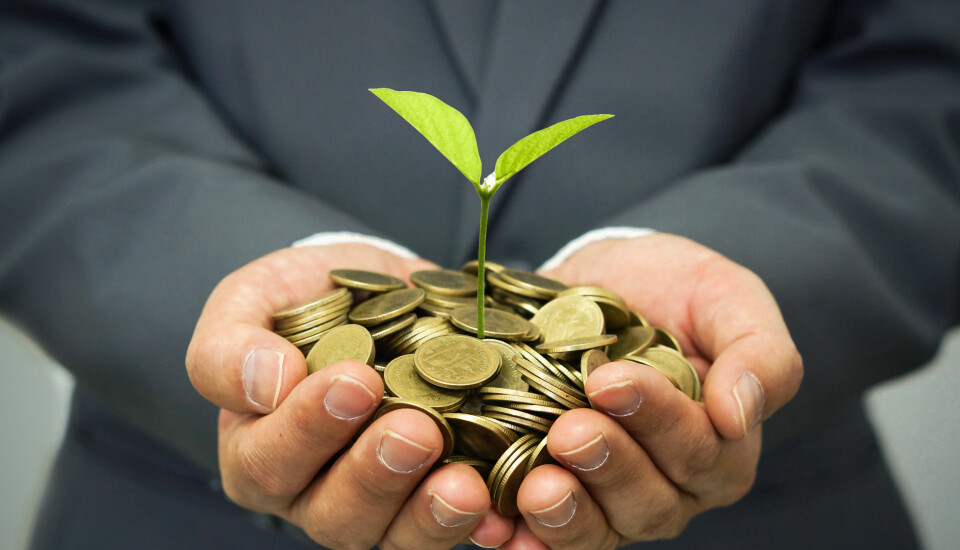
by Geeta Sinha 28 September 2023
The increasing environmental crisis, coupled with the implementation of the Sustainable Development Goals (SDGs), prompts changes in the behavior of consumers, investors, and producers. Sustainable development calls for the integration of sustainable consumption and production patterns into national development and planning. Its relevance and significance are well emphasized through SDGs Goal 12, listed as ‘responsible consumption and production.’ This goal aims to promote the efficient and environmentally friendly use of all natural and energy resources throughout all phases of product production, transportation, and consumption, including packaging, waste storage, and waste processing.
Additionally, it calls for the need to ensure fair working conditions for all participants in the production process, particularly the most vulnerable ones, such as manufacturers, particularly in developing nations. According to the United Nations Environment Programme (UNEP), sustainable consumption and production refer to “the use of services and related products that respond to basic needs and bring a better quality of life while minimizing the use of natural resources and toxic materials, as well as the emissions of waste and pollutants over the life cycle of the service or product, so as not to jeopardize the needs of future generations.”
Sustainable consumption is frequently compared with sustainable production, where consumption refers to the use, disposal, or recycling by governments, businesses, and other organizations, including individuals and households. It is believed that sustainable lifestyles minimize ecological impacts while enabling a flourishing life for individuals, households, communities, and beyond. Also, sustainable consumption is closely related to sustainable production and sustainable lifestyles.
Through globalization, free trade, and open global markets, borders have been opened, prompting high levels of competition that have led to the creation of mass-produced goods and services, where quality is compromised regularly for the sake of profit and packaging. Moreover, consumer behavior changes when the emphasis shifts from overconsumption to an eco-friendly or green lifestyle. As a result, there is a rising demand for eco-friendly goods and services offered by environmentally conscious businesses. This encourages businesses to update their technology and produce environmentally friendly goods in line with the SDGs. It is well established that such advancements in green technology and modernization are possible through green investments.
On the other hand, it has been observed that some businesses use greenwashing as an unethical marketing strategy to stay ahead in the competition for attracting green investors and consumers. Moreover, the promotion of sustainable consumption is more prominent at the individual and household levels, while the sustainability of consumption by businesses in the production of goods and services is hardly verified.
More recently and globally, there has been a proliferation of green markets, eco-labeling, the green economy, green jobs, green GDP, and green growth. Consumer behavior, capital markets, goods, services, and business growth have all increased, and as a result, the phenomenon of “greenwashing” has followed the growth of the green market and green economy. According to Delmas and Burbano (2011), this phenomenon is described as the intersection of two firm behaviors: poor environmental performance and positive communication about environmental performance.
Furthermore, multiple stakeholders and society at large are demanding transparency in the disclosure of information about how a company’s operations affect the environment. This transmission of information is expected to be dynamic, delivered through various channels, and designed to raise awareness. Similarly, the Federal Trade Commission (2012) advises using clear and prominent qualifying language to convey that a general environmental claim refers only to specific and limited environmental benefits.
Many businesses invest in green marketing communications to appear environmentally and socially conscious, using corporate social responsibility (CSR) and advertising to improve brand attitudes and purchase intentions. However, scholars believe that the reality of corporate environmentalism can be disheartening, and most products that claim to be green are engaged in at least one of the “sins of greenwashing,” ranging from the sin of the hidden trade-off to the sin of worshiping false labels in the name of eco-labeling (TerraChoice, 2010).
Greenwashing practices have reportedly reached epidemic levels in recent years, according to the advertising agency Ogilvy and Mather. Customers are finding it challenging to distinguish between greenwashing and genuine green claims as the green market has grown. This has escalated people’s cynicism toward environmental causes because customers find it difficult to distinguish real green claims made by businesses. These business ideas, strategies, and market interventions are in line with the whole concept of ‘green capitalism.’ In such cases, the conceptualization of natural capital as a “critical economic asset” opens the door for commodification, or “green capitalism.”
Additionally, the green jobs are created by free-market players in the green economy also widen the gap in economic exchange between the global north and south. Scholars believe that industrial capitalism has fragmented “life-support systems,” and new forms of commodification and market logic, such as “carbon trading,” “geoengineering,” or “climate-smart agriculture,” cannot restore them as conceptualised by Salleh (2015).
Moreover, technological advancement is expected to counteract the effects of current natural resource depletion, which is often seen as a passing trend. This highlights the need to establish indicators to measure and track the progress made by the transformational green economy, rather than relying solely on GDP. Measuring a country’s growth and health solely in terms of GDP is an inadequate parameter and essentialist way of projecting economic growth without human development and wellbeing.
Similarly, the Sustainable Development Goals (SDGs), which adopted the title ‘Transforming Our World by 2030,’ align with the existing capitalist economic growth model. To address this paradox, scholars propose that simply agreeing with the spirit of the goals is insufficient; inducement of action is required. Unfortunately, policies promoting green economy and green growth can be elusive, often providing creative ways to accumulate capital with a green justification. Green capitalism, which promotes greenwashing, uses the concept of a green economy as a significant discursive tool to justify state-facilitated and market-driven environmental harm in various countries and regions.
It is within this context, the concept of sustainable consumption should be extended to businesses, where their consumption and production patterns are tracked and measured. This would ensure transparency, accountability, legitimacy, and a genuine contribution to the green economy, rather than serving the interests of green capitalism.
Delmas M, Burbano V (2011) The drivers of greenwashing. Calif Manag Rev 54(1):64–87
Federal Trade Commission (2012) Guides for the use of environmental marketing claims. https://www.ftc.gov/sites/default/files/documents/federal_register_notices/guides-use-environmental-marketing-claims-green-guides/greenguidesfrn.pdf.
TerraChoice (2010) The sins of greenwashing: home and family edition. http://sinsofgreenwashing.org/findings/the-seven-sins



0 Comments
LEAVE A COMMENT
Your email address will not be published